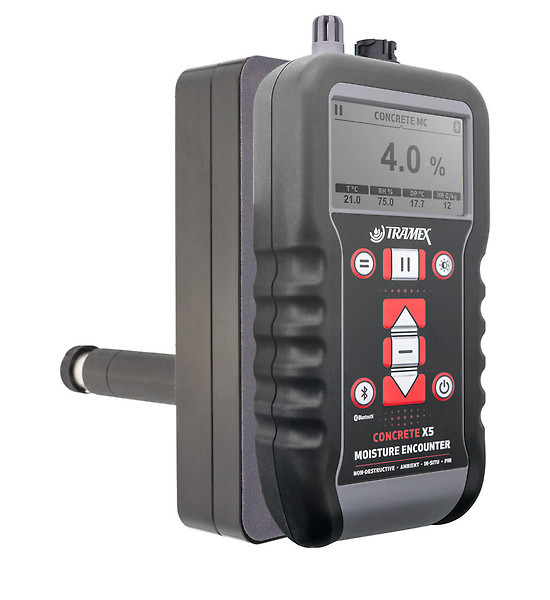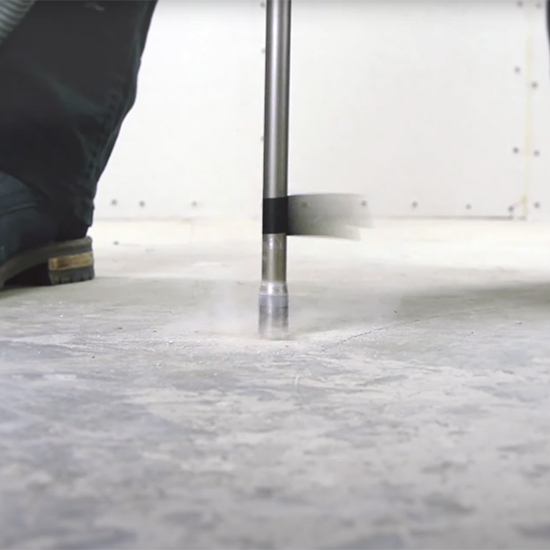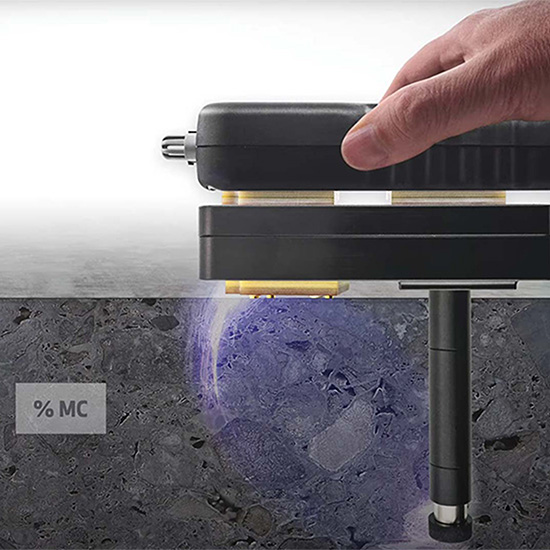Step 2: Taking a in-situ moisture content reading
To take an in-situ moisture content reading, first adjust the length of the probe to the required reading depth and attach it to the base of the cradle.
Then, insert the probe into the hole so that the cradle sits flat on the concrete surface.
To take a reading, place a concrete moisture encounter in the cradle and press it firmly onto the slab.
The moisture content percentage can be measured to a depth of up to 4’ (10cm), as the probe reads from the bottom towards the top.
Rotate the cradle in the hole to take a few readings ‘around-the-clock’ and record the highest result.


